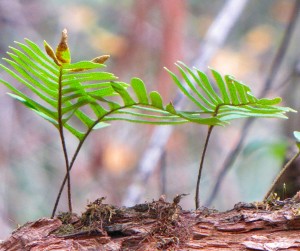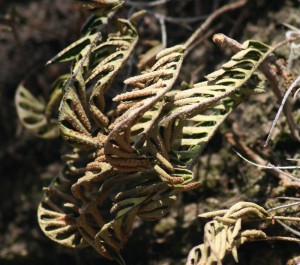Just Add Water
Posted in Around the Garden, Science on February 1 2012, by Matt Newman
 You might call it something dramatic–the “Lazarus Quandary,” maybe. It’s the scientific milestone we’re all hoping will be uncovered before we’re pitched off this mortal coil. Each year we read news articles which claim that stopping or even reversing the effects of aging is a trope of science fiction nearly within reach; it’s just beyond the next major research grant. But a simple plant–well past ancient as a species–has already cracked the code.
You might call it something dramatic–the “Lazarus Quandary,” maybe. It’s the scientific milestone we’re all hoping will be uncovered before we’re pitched off this mortal coil. Each year we read news articles which claim that stopping or even reversing the effects of aging is a trope of science fiction nearly within reach; it’s just beyond the next major research grant. But a simple plant–well past ancient as a species–has already cracked the code.
Calling Pleopeltis polypodioides (pronouncing it is like calisthenics for your mouth) the lazy greenthumb’s plant is an apt description. It doesn’t take much to keep it vibrant. In fact, a glass of water in the course of a century might just do the trick. And if its fronds shrivel up and seem to die off in the interim, don’t fall for the ruse–the “resurrection fern” is only playing opossum.
The fern’s origins make it sound like a dinosaur, which in some sense it is, with fern species dating back 360 million years in the fossil record. The resurrection fern grows in abundance in the Americas, as well as parts of Africa. It’s found growing wild from Illinois to Florida, where it flourishes in large groups on tree limbs (it’s an air plant, also known as an epiphyte) and wicks moisture from the bark of oaks and other large, woody plants. But when water is in scarce supply, survival instincts take over; the fern’s fronds curl up, desiccated, and take on the gray-brown hue of a plant you would normally send to its compost funeral.
 What happens when you add water to the zombified remains is the miraculous bit. As if traveling backwards through time, even the most meager spritzing of H2O causes the “dead” foliage of the fern to spring back to life in only a short time, just as verdant as any young, well-nourished plant. There’s no evidence that it ever kicked the bucket to begin with. But in truth it was never dead.
What happens when you add water to the zombified remains is the miraculous bit. As if traveling backwards through time, even the most meager spritzing of H2O causes the “dead” foliage of the fern to spring back to life in only a short time, just as verdant as any young, well-nourished plant. There’s no evidence that it ever kicked the bucket to begin with. But in truth it was never dead.
According to Dr. Robbin C. Moran, Mary Flagler Cary Curator of Botany at the NYBG‘s Steere Herbarium (and one of the world’s foremost fern specialists,) the plant’s rehydration properties are rather “remarkable.” He outlines the quality in a chapter of his 2004 publication, A Natural History of Ferns.
This fern doesn’t go about hoarding moisture like the well-adapted succulents–aloe, for example–that are so often found surviving in arid environments. Instead, Pleopeltis polypodioides has evolved to survive almost regardless of how much water it actually loses. This can be a drop in moisture levels estimated up to 97%, living in a parched state for what scientists claim may be nearly a hundred years. Compare this deficit to the 10% or so that it takes to kill your average houseplant and the resurrection fern’s reputation for immortality becomes slightly more believable.
But will it give us the key to eternal life? Doubtful. Sprucing up your wrinkles with a glass of water is still a dream only read about in science fiction. Better yet, the fern in the woods behind your house might just outlive us all, and look great doing it.
Photos courtesy of Wikimedia Commons.

